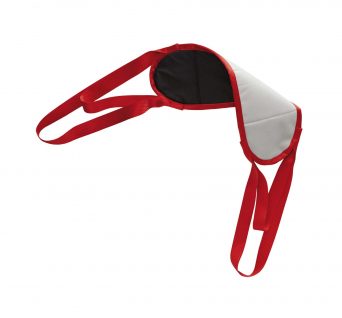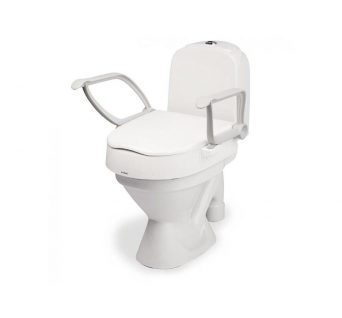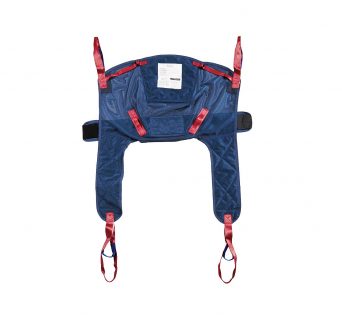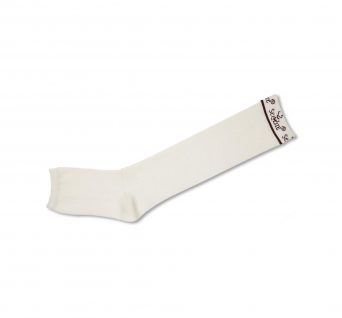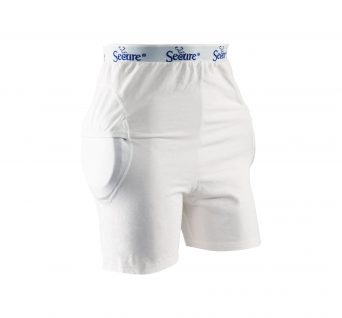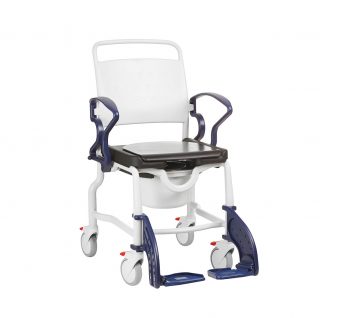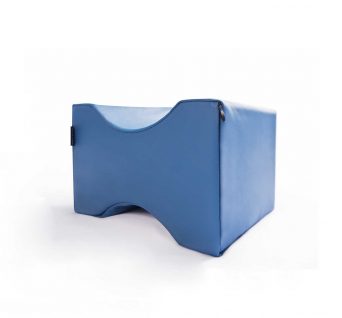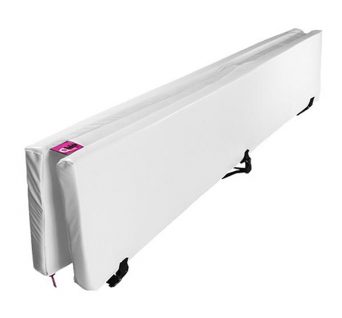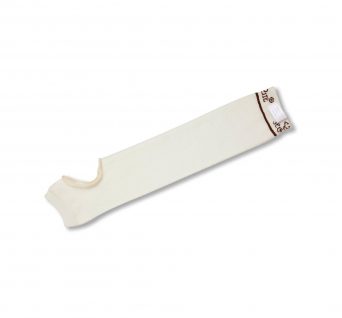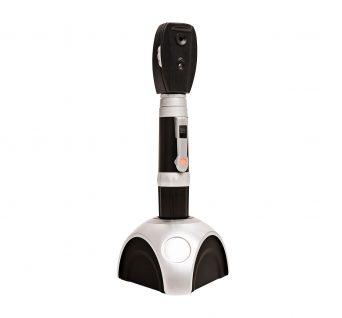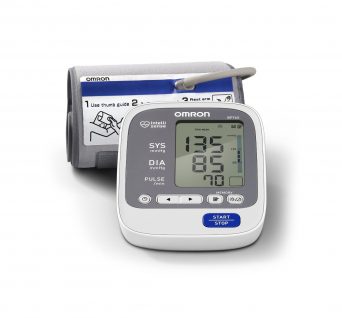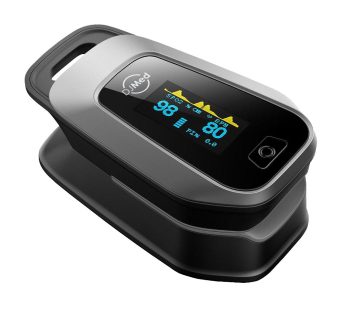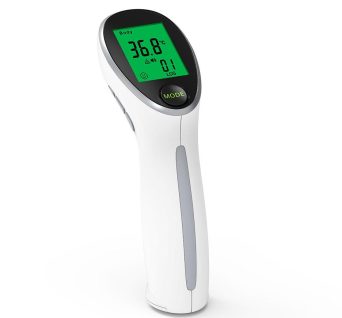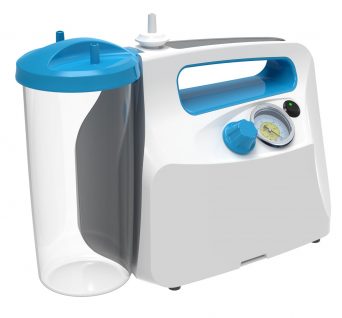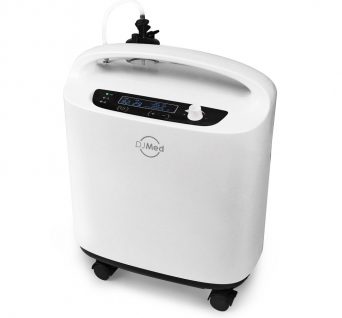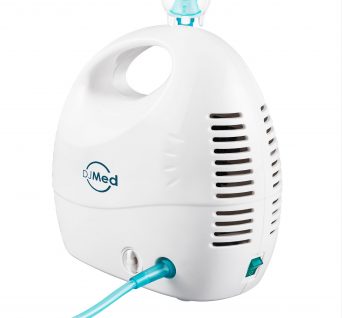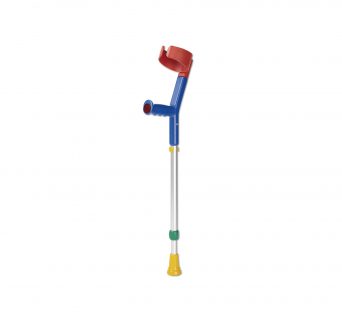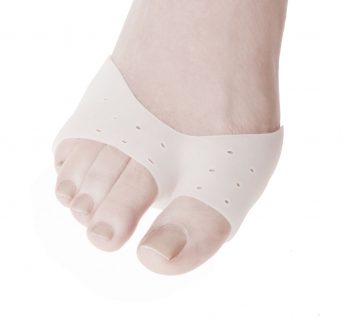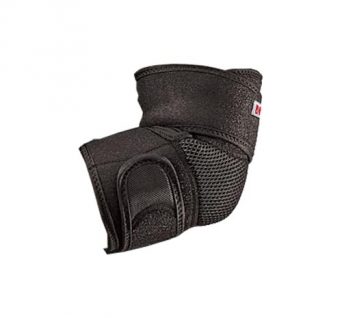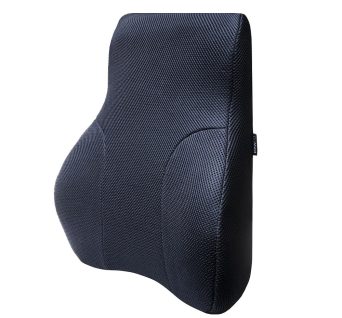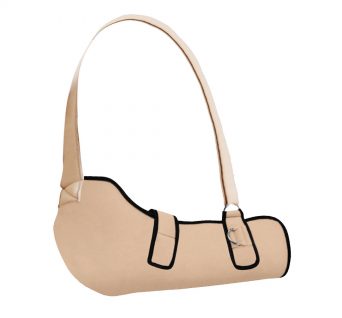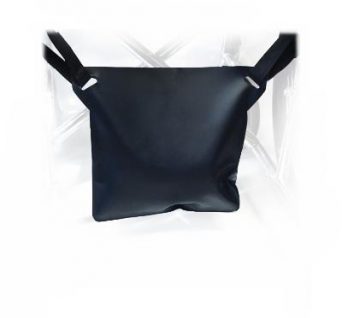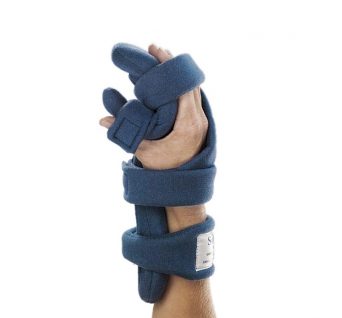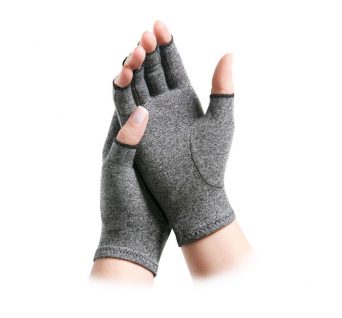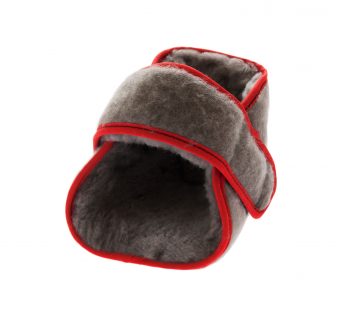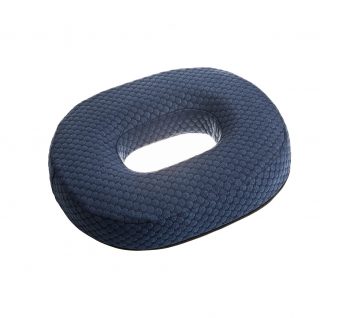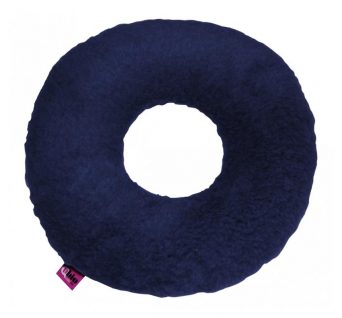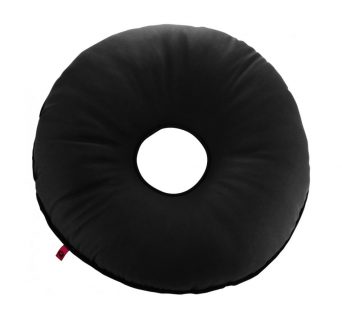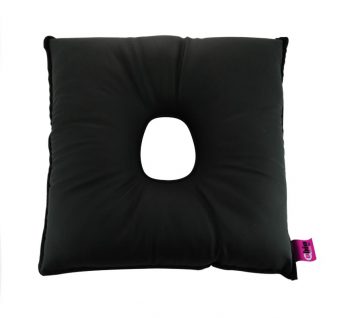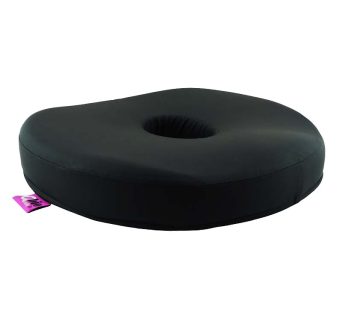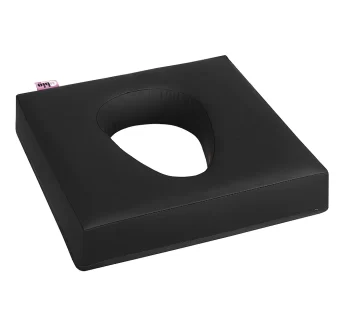No products in the cart.
Donut Cushions
Showing all 7 results
- Donut Cushions
Oval Foam Donut Coccyx Cushion
Recovery, comfort, pressure relief, unzip and wash cover, does not deflate.
Ideal for after childbirth, haemorrhoid sufferers or lower back pain.
Coccyx oval shaped doughnut cushion with a voided centre. Made with high resilience foam for support that comfortably conforms to your body contours and reduces pressure to the area of discomfort.
SKU: 861 - Donut Cushions
Ubio Square Donut Cushion
Square donut cushion’s voided centre frees the affected area from pressure.
For effective relief and recovery from childbirth, haemorrhoids, fistulas, lower back pain, tailbone injury, and prostate surgery, the doughnut cushion is a great product to use.
Filled with silicone fibre, it has some natural wool features: anti-dust mite, anti-bacterial, anti-fungus, anti-odour, soft, breathable, and washable.
The doughnut is soft and comfortable yet firm enough to prevent compressing under an average weight load. Benefits/Features of Doughnut Cushion
SKU: n/a - Donut Cushions
Ubio Round Donut Cushion
The donut cushion is designed with a round void center that suspends the affected area from painful pressure.
- For relief of discomfort associated with tailbone, coccyx, post childbirth and lower back pain.
- Round Donut Cushion is thick fluffy for the experience of high softness comfort seating.
- Round shape is suited for a variety of sized wheelchairs as well as other types of seating.
SKU: n/a - Donut Cushions
Ubio Round Donut Cushion with Waterproof Cover Fabric
Donut cushion with non liquid permeable, wipeable cover for improved hygiene.
Use on a chair to support lumbar or coccyx ailments and pressure sensitive conditions.
Cover fabric is waterproof, anti-mite, anti-bacterial, anti-fungal, flame-resistant (M1), anti-resistant, stain-resistant breathable and soft.
SKU: 114100 - Donut Cushions
Ubio Square Donut Cushion with Waterproof Cover Fabric
Square donut cushion with non-fluid permeable, wipeable cover for added level of hygiene.
Ring cushion is used for individuals recovering from tail-bone, coccyx or lower back pain or ailments.
Cover fabric is waterproof, anti-mite, anti-bacterial, anti-fungal, flame-resistant (M1), anti-resistant, stain-resistant breathable and soft.
SKU: 114115 - Donut Cushions
Ubio Ergonomic Donut Cushion with Wipeable Cover
Memory foam circular shape cushion with a hole in the center to allow for even weight distribution
The Ubio Ergonomic Donut Cushion with Wipeable Cover is designed to prevent back pain and offer relief for those who have injuries or discomfort in the lower region, those who suffer from hemorrhoids’, and even for women after giving birth.
The memory foam cushion has a hole in the center to allow for even weight distribution while ensuring that your back is well supported.
- Cut out design
- Good weight distribution
- Ergonomic
- Wipeable cover for easy maintenance
SKU: 102450 - Donut Cushions, Wheelchair Cushions
Wheelchair Cushion with Center Void
The heart of our cushion’s design is its unique center void, carefully crafted to relieve pressure on the tailbone and coccyx.
Are you or a loved one spending extended hours in a wheelchair, seeking relief from discomfort and pressure sores? Look no further! Our Wheelchair Cushion with Centre Void is designed to provide you with the ultimate solution for enhanced comfort and mobility, helping you reclaim your independence and well-being.
Whether you’re a wheelchair user or someone seeking a comfortable seating solution, our cushion with centre void is your ticket to unmatched comfort and improved well-being. It’s time to experience the ultimate in seated comfort and rediscover the joy of mobility.
SKU: 102250
Donut Cushions
A coccyx donut cushion, also known as a donut pillow or a hemorrhoid cushion, is a type of cushion designed to provide relief and comfort to individuals who experience pain or discomfort in the tailbone (coccyx) area or the lower back. The cushion is named after its round, ring-like shape, which resembles a donut. It is characterized by a central cutout or hole in the middle of the cushion.
The main purpose of a coccyx donut cushion is to alleviate pressure on the coccyx and surrounding areas when sitting. It is often used by people who have:
Coccyx Pain: Individuals with coccydynia, which is pain or discomfort in the coccyx area, can benefit from a coccyx donut cushion. Conditions such as injuries, fractures, or inflammation of the coccyx can lead to discomfort when sitting.
Hemorrhoids: People with hemorrhoids or anal discomfort often find relief from using a donut cushion. The central cutout helps reduce pressure on the sensitive anal area and provides comfort during prolonged sitting.
Post-Surgical Recovery: After certain surgeries, such as coccyx surgery or anal surgery, using a coccyx donut cushion can aid in the healing process by minimizing pressure on the surgical site.
Lower Back Pain: Some individuals with lower back pain find that using a donut cushion provides relief by redistributing pressure and supporting proper spinal alignment.
The design of a coccyx donut cushion typically features:
- A round shape with a central cutout or hole.
- The cushion is made from materials such as foam, gel, or memory foam, which provide comfort and support.
- The cushion's cover is often removable and washable for easy maintenance.
- Some cushions may have a non-slip bottom to prevent it from sliding on chairs.
When using a coccyx donut cushion, the person sits on the cushion with their tailbone positioned over the central cutout. This arrangement helps reduce direct pressure on the coccyx and surrounding areas, promoting more comfortable sitting and potentially aiding in the healing process.
It's important to note that while a coccyx donut cushion can provide relief for certain conditions, it might not be suitable for everyone or for all situations. If you're experiencing pain or discomfort in the tailbone area, it's recommended to consult a healthcare professional for proper diagnosis and guidance on the use of cushions or other methods for managing your condition.
How to choose a coccyx donut cushion?
Choosing the right coccyx donut cushion involves considering factors that align with your specific needs and preferences. Here are some steps to help you choose a suitable coccyx donut cushion:
Identify Your Needs:
- Determine why you need a coccyx cushion. Is it for coccyx pain, hemorrhoids, post-surgery recovery, or another condition?
- Consider if you have any specific preferences, such as the type of material you prefer (foam, gel, memory foam), the cushion's size, and its intended use (office chair, car seat, home).
Cushion Material:
- Foam: Offers good support and cushioning. Memory foam molds to your body shape.
- Gel: Provides cooling comfort and conforms to your body.
- Memory Foam: Offers excellent comfort and support by adapting to your body's contours.
Size and Shape:
- Choose a cushion size that fits comfortably on the chair or surface you'll be using it on.
- The cushion should be large enough to support your entire seating area while still allowing your legs to rest comfortably.
Cutout Design:
- Look for a cushion with a well-designed and appropriately sized central cutout that provides relief to your coccyx area without causing discomfort to other parts of your body.
Firmness:
- Select a cushion with the right level of firmness for your comfort. It should provide support while still feeling comfortable to sit on for extended periods.
Cover and Maintenance:
- Check if the cushion has a removable and washable cover. This makes it easier to keep the cushion clean.
Portability:
- If you need to use the cushion in various places (office, car, home), consider a lightweight and portable option.
Non-Slip Base:
- A non-slip bottom can help keep the cushion in place on different seating surfaces.
Reviews and Recommendations:
- Read customer reviews and recommendations to get an idea of how effective and comfortable the cushion is for others who have similar needs.
Price and Brand:
- Set a budget and explore options within that range. Keep in mind that higher-quality materials and features might come at a slightly higher cost.
- Consider reputable brands known for producing comfortable and supportive cushions.
Trial and Return Policy:
- If possible, choose a cushion that offers a trial period or a flexible return policy. This allows you to test the cushion and return it if it doesn't meet your expectations.
Consult a Healthcare Professional:
- If you're using the cushion for a specific medical condition, it's a good idea to consult a healthcare professional for guidance on the most appropriate cushion for your needs.
Remember that comfort is subjective, so it's important to choose a coccyx donut cushion that feels comfortable to you and provides relief for your specific condition. Take your time to research different options, try them out if possible, and prioritize your comfort and well-being.
Is a donut cushion good for tailbone pain?
Yes, a donut cushion can be beneficial for tailbone pain, also known as coccydynia. Donut cushions are specifically designed to relieve pressure on the coccyx (tailbone) and the surrounding area, making them a popular choice for individuals who experience discomfort or pain in this region. Here's how a donut cushion can help with tailbone pain:
Pressure Relief: The central cutout or hole in the donut cushion allows the tailbone to be suspended in the air, relieving direct pressure on the sensitive coccyx area. This can help reduce pain and discomfort caused by sitting for prolonged periods.
Support: Donut cushions are usually made from materials such as foam, gel, or memory foam, which provide a supportive and cushioned surface to sit on. This support can promote better posture and help alleviate tailbone pain.
Alignment: Using a donut cushion can help maintain proper alignment of the spine and pelvis while sitting. This can be particularly helpful for individuals who have pain radiating from the coccyx area to the lower back.
Promotes Healing: If you're recovering from coccyx injuries or surgery, a donut cushion can aid in the healing process by reducing pressure on the affected area and minimizing discomfort during sitting.
Hemorrhoid Relief: Donut cushions are also commonly used by individuals with hemorrhoids, as the central cutout reduces pressure on the anal area, providing relief and comfort during sitting.
Comfort: Many people find that using a donut cushion improves their overall comfort while sitting, especially if they have tailbone pain or discomfort.
However, it's important to note that while a donut cushion can be effective for some individuals, it might not work for everyone or for all types of tailbone pain. It's recommended to consult a healthcare professional for an accurate diagnosis of your condition and to discuss whether a donut cushion is suitable for your specific situation. They can provide personalized recommendations for managing your tailbone pain, which may include using a donut cushion alongside other treatments or interventions.
What is the difference between a donut cushion and a coccyx cushion?
Both donut cushions and coccyx cushions are designed to provide comfort and relief for individuals experiencing tailbone pain, coccyx discomfort, or related conditions. However, there are subtle differences between the two types of cushions:
Donut Cushion:
Shape: A donut cushion, also known as a ring cushion, has a round shape with a hole or cutout in the center. This hole resembles the shape of a donut, which is where the cushion gets its name.
Design: The central cutout in a donut cushion is designed to relieve pressure on the coccyx and surrounding areas. It allows the tailbone to be suspended in the air when sitting, reducing direct pressure and discomfort.
Usage: Donut cushions are often used by individuals with tailbone pain, coccyx injuries, hemorrhoids, and other conditions that require pressure relief in the pelvic region.
Coccyx Cushion:
Shape: A coccyx cushion has a slightly different shape compared to a donut cushion. It typically has a cutout or contour at the back of the cushion, designed to accommodate the coccyx area.
Design: The main focus of a coccyx cushion is to provide support and relief specifically to the coccyx or tailbone area. The cutout at the back of the cushion allows the coccyx to remain suspended, reducing pressure and promoting comfort.
Usage: Coccyx cushions are primarily used by individuals with tailbone pain, coccydynia, lower back pain, or conditions that require targeted support for the coccyx region.
Ultimately, the choice between a donut cushion and a coccyx cushion depends on your individual preferences, the nature of your tailbone pain or coccyx discomfort, and your healthcare provider's recommendations.
- Both donut cushions and coccyx cushions aim to provide relief from tailbone pain and coccyx discomfort.
- Donut cushions have a circular shape with a hole in the center, while coccyx cushions often have a cutout or contour at the back of the cushion.
- Donut cushions provide relief by reducing pressure on the coccyx and surrounding areas.
- Coccyx cushions offer targeted support to the coccyx region, helping to alleviate pain and discomfort in that specific area.
- When choosing between the two, consider your specific needs, comfort preferences, and the design that best suits your condition.

